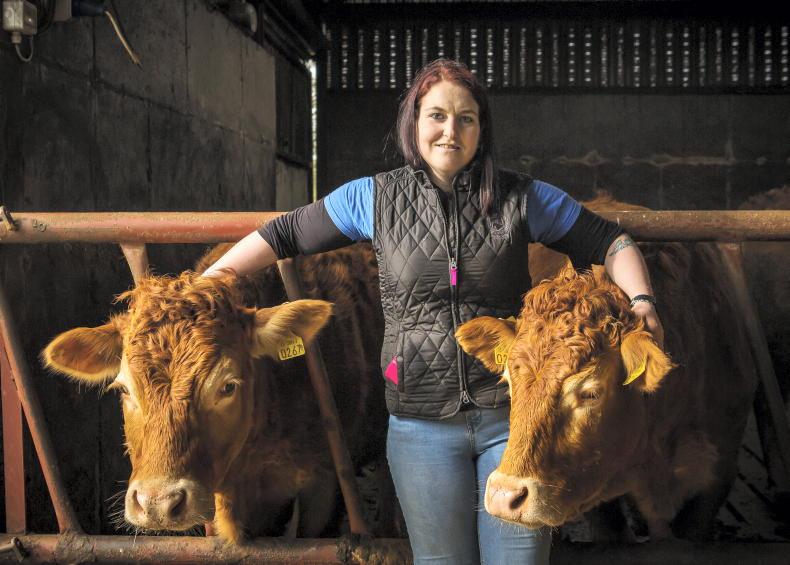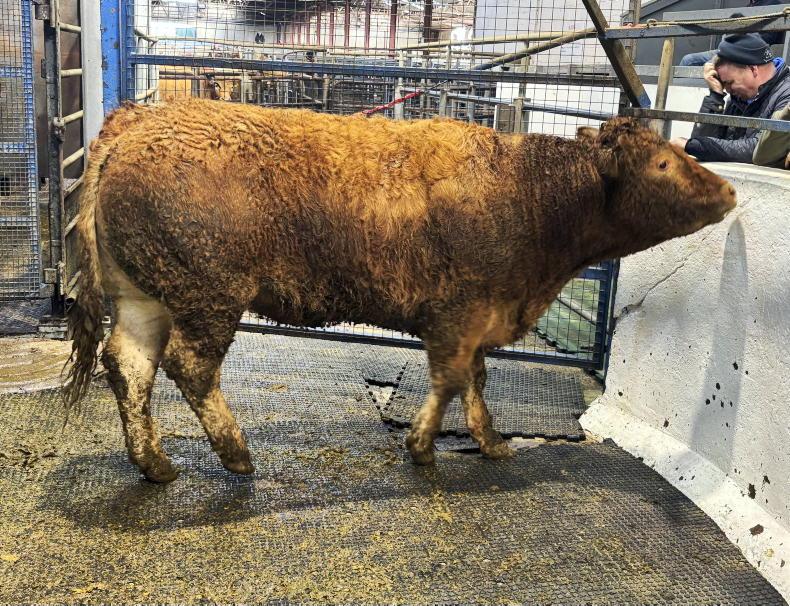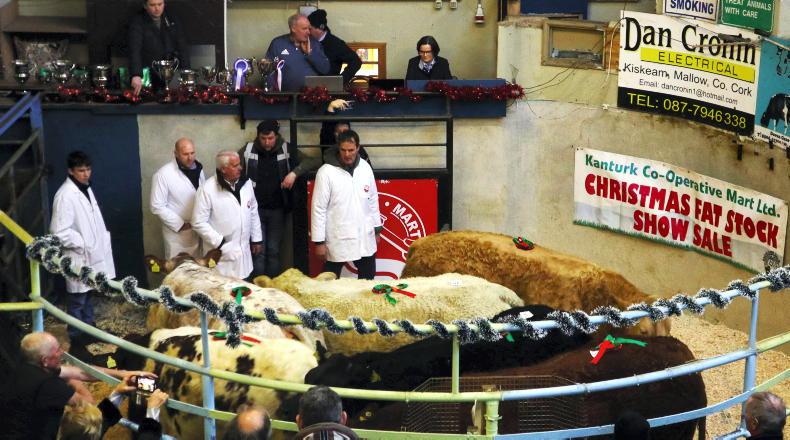With calving now over, we took the time to pick and choose if there were any cows which were going on the cull list.
A couple immediately stood out, as while their calves were thriving, they weren’t producing the amount of milk we’d hoped for. These two in particular were kept for their docility and the dams/grand-dams before them are still in the herd (and quite milky), so the chance was taken in trust that the more maternal genetics would be passed on, along with the longevity.
However, I’m sure many people down in Lisdoonvarna have made the same error of judging a person on their looks, instead of looking at the complete package.
Blinded by flashy golden and red hair, it’s a simple mistake to make – until it’s a couple of years too late.
Heifers
We do have a few flashy Belgian Blues in the field this year: one male and two females. While the heifers are also half-sisters from the same sire, they’re as different from each other as chalk and cheese.
One took after her Charolais dam; pure white and with bone that’d please the most ornery butcher. The other wouldn’t look out of place acting a part in 101 Dalmatians, as she arrived with strong muscle and spotty black-and-white colouring that would turn any head.

Karen has picked out a few cows for the cull list. \ Philip Doyle
Seeing as they’re so different, I can only choose one to show, and it’s likely I’ll choose the wrong one; but that’s part of the fun. It’s been a few years now since I showed commercial cattle, so hopefully I haven’t forgotten everything Dad taught me.
Thankfully, both heifers are quiet, which will hopefully make training easier, as over the years I’ve found the females to be much more difficult to train on a halter than the bulls.
My secret weapon used to be a pocketful of ivy or ash – a reward treat if I wasn’t dragged across the field. Unfortunately, ash is more difficult to come by these days, so it looks like just ivy will be on the menu.
Orphan calf
Our orphan calf has also learned of this treat and while he’s thriving at the moment, it also means escaping from the field after feeding him can be an issue, requiring a sprint across less-than-traversable land on occasion.
Thankfully, he’s also thriving at the moment, with a vet friend of ours claiming he’s the best ad for milk replacer he’s seen in recent years.
Break-outs
With marginal land to contend with, there’s no shortage of things we have to watch out for, be it escapees through a hedge or simply an animal that’s disappeared and can’t be found.
Our meadows are doing well for the moment. With a light application of 10-10-20, we’ve seen great growth in recent weeks.
Hopefully our expected first cut should be ready in the next couple of weeks, so long as the good weather keeps going.
With calving now over, we took the time to pick and choose if there were any cows which were going on the cull list.
A couple immediately stood out, as while their calves were thriving, they weren’t producing the amount of milk we’d hoped for. These two in particular were kept for their docility and the dams/grand-dams before them are still in the herd (and quite milky), so the chance was taken in trust that the more maternal genetics would be passed on, along with the longevity.
However, I’m sure many people down in Lisdoonvarna have made the same error of judging a person on their looks, instead of looking at the complete package.
Blinded by flashy golden and red hair, it’s a simple mistake to make – until it’s a couple of years too late.
Heifers
We do have a few flashy Belgian Blues in the field this year: one male and two females. While the heifers are also half-sisters from the same sire, they’re as different from each other as chalk and cheese.
One took after her Charolais dam; pure white and with bone that’d please the most ornery butcher. The other wouldn’t look out of place acting a part in 101 Dalmatians, as she arrived with strong muscle and spotty black-and-white colouring that would turn any head.

Karen has picked out a few cows for the cull list. \ Philip Doyle
Seeing as they’re so different, I can only choose one to show, and it’s likely I’ll choose the wrong one; but that’s part of the fun. It’s been a few years now since I showed commercial cattle, so hopefully I haven’t forgotten everything Dad taught me.
Thankfully, both heifers are quiet, which will hopefully make training easier, as over the years I’ve found the females to be much more difficult to train on a halter than the bulls.
My secret weapon used to be a pocketful of ivy or ash – a reward treat if I wasn’t dragged across the field. Unfortunately, ash is more difficult to come by these days, so it looks like just ivy will be on the menu.
Orphan calf
Our orphan calf has also learned of this treat and while he’s thriving at the moment, it also means escaping from the field after feeding him can be an issue, requiring a sprint across less-than-traversable land on occasion.
Thankfully, he’s also thriving at the moment, with a vet friend of ours claiming he’s the best ad for milk replacer he’s seen in recent years.
Break-outs
With marginal land to contend with, there’s no shortage of things we have to watch out for, be it escapees through a hedge or simply an animal that’s disappeared and can’t be found.
Our meadows are doing well for the moment. With a light application of 10-10-20, we’ve seen great growth in recent weeks.
Hopefully our expected first cut should be ready in the next couple of weeks, so long as the good weather keeps going.











SHARING OPTIONS